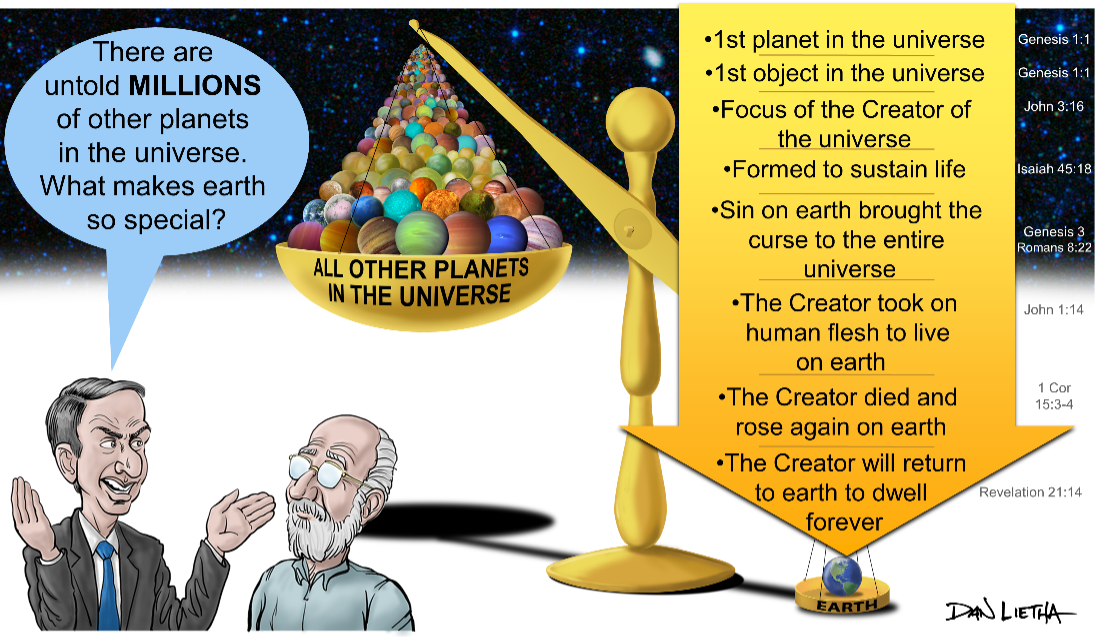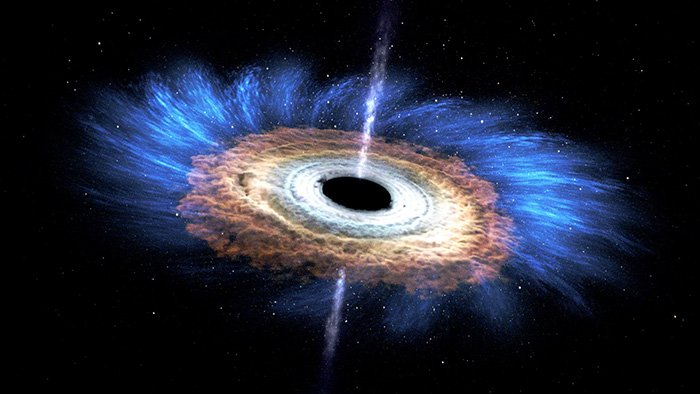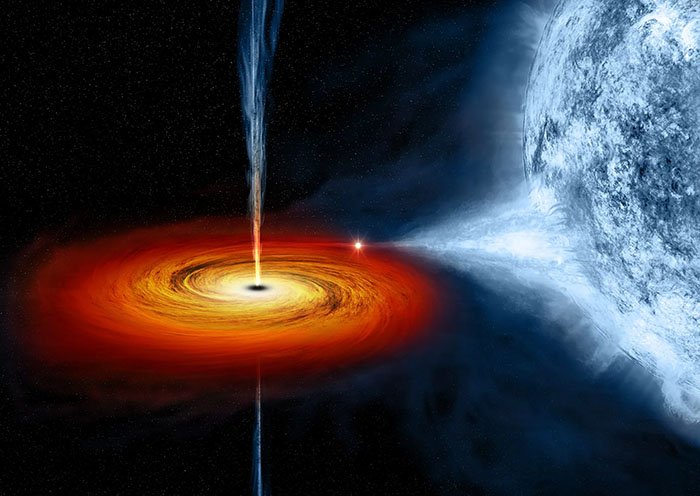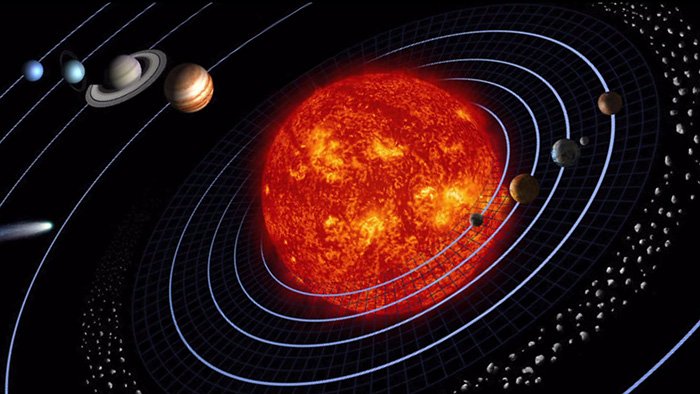Black Holes in Our Galaxy
NASA, Public Domain
Ask a Rocket Scientist
by Rob Webb on January 5, 2024Name: Burke
Grade: 5
What is your favorite planet or star?: Earth
What is your favorite rocket?: Apollo
Question: If there is a black hole in the center of our Galaxy, how come we’re not all sucked in yet?
Hi Burke, thanks for your great question! My favorite planet is the earth too! I love the earth because it’s our planet that was made “just right” for us to inhabit and call home (Isaiah 45:18). In fact, the more we study the universe, finding more and more planets (called exoplanets) orbiting other stars, the more we understand just how unique the earth is—specially designed for us by God!

Cartoon by Dan Lietha
And it just so happens . . . we both have the same favorite rocket! My all-time favorite rocket is the Saturn V, the really tall and powerful rocket that NASA used to launch the Apollo astronauts to physically touch down on the moon’s surface.

The Saturn V rocket launch for the Apollo 11 mission. Photo credit: NASA, Public domain, via Wikimedia Commons
Now to your question, why doesn’t the black hole in the middle of our Milky Way galaxy “suck up” everything (including us) around it? Let’s first go over what a black hole is.

Photo credit: NASA
Black holes are objects made by God in space that have really strong gravity, as a result of a lot of “stuff” (matter) being squeezed into a tiny space.1 In fact, the gravity is so strong that it’s pulling in space itself faster than the speed of light, which means nothing—not even light—can escape it! So because no light can get out, we can’t see black holes (hence the name “black”). Scientists have to use special tools on space telescopes to find black holes.2
Black holes also come in all different sizes, ranging from some that are quite small3 and up to some that are really large (called “supermassive”) and have a mass4 of more than a million suns together. To give you an idea of how BIG that is, the sun is over 300,000 times heavier than the earth, so a supermassive black hole weighs more than 300,000,000,000 times as much as earth—now that’s enormous!

Photo credit: NASA
On top of that, black holes can keep growing from any matter that falls into them,5 including gas from stars and even other black holes! Scientists also believe every large galaxy contains a supermassive black hole at its center, including one at the center of our Milky Way galaxy (called Sagittarius A) that is estimated to have a mass of about four million suns.
But don’t worry! Black holes are very far away in space, so we’re safe here on earth. There are no black holes anywhere close to us, so we can rest assured that the earth will not fall into a black hole. Plus, black holes do not move around in space “eating” or “sucking” up stars and planets. (So we don’t have to worry about one hunting us down anytime soon!)

Photo credit: NASA
Black holes interact with matter through gravity. That is, anything too close will get pulled in, but from a far enough distance, black holes are just like any other object with mass and gravity. So, in the same way that the planets in our solar system orbit around the sun, the stars and other matter in the galaxy stay in orbit around the supermassive black hole at the center and not just fall straight in.

Photo credit: NASA
As a pretend scenario, imagine replacing the sun with a black hole (don’t worry, this would never happen!) with the same mass. Since the black hole would have the same gravity as the sun, the earth and the other planets would still continue in its orbit and not fall into the black hole. (Although it would definitely get dark and cold for us on earth!)
In the end, black holes are another example of the fascinating things that we continue to discover in the heavens—created by our powerful Lord and Savior, Jesus Christ—who promises to uphold everything in the universe by his power (Hebrews 1:3). By studying black holes from a safe (far away) distance, we can learn more about the amazing mysteries of the heavens that display the awesome glory of our Creator! “The heavens declare the glory of God, and the sky above proclaims his handiwork” (Psalm 19:1).
Ask Your Question
Ask a parent to help you submit your space-related question to Rob Webb today! Don't forget to check back next week to see if your question was chosen!
Footnotes
- With a parent’s help, you can learn about the anatomy of black holes interactively on NASA’s website, here: https://universe.nasa.gov/black-holes/anatomy/.
- They do this by seeing how the strong gravity affects the stars and gas around the black hole. And when a star is close to a black hole, high-energy light is made, which can’t be seen with our human eyes but can be seen using special telescopes.
- Here’s an interesting side note: scientists think the smallest black holes could be as small as just one atom but still have the mass of a large mountain!
- Mass is the amount of “stuff” (matter) in an object.
- The boundary that marks this point of no return, where matter falls in but can’t get out, is called the “event horizon” (past this point, there’s no hope of turning back!)
- © 2025 Answers in Genesis
- Privacy Policy
- Contact
- About
